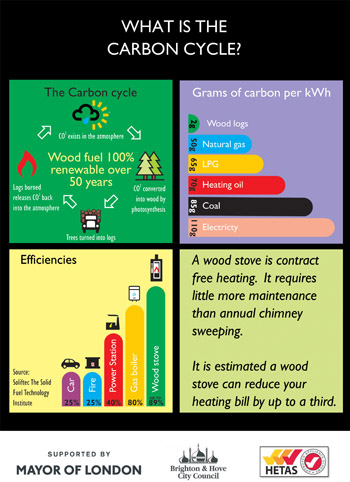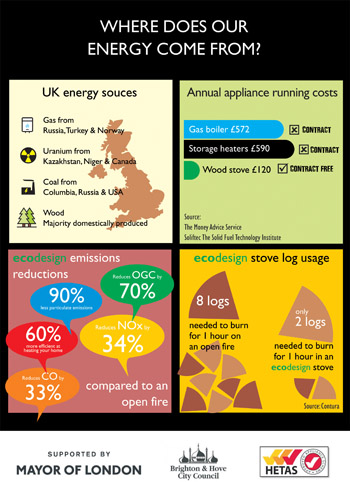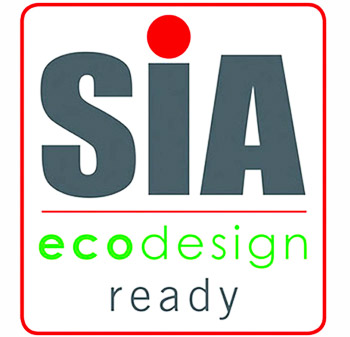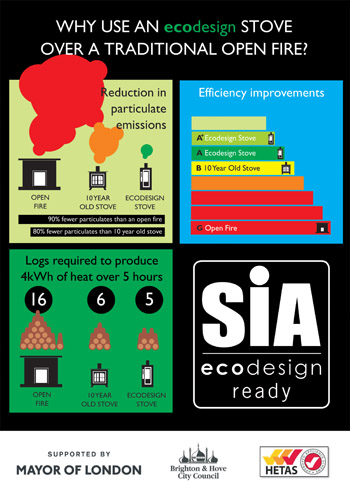|
|
 |
 |
 |
WOOD BURNING FAQ
What is the smoke control area and how does it affect me?
The smoke control area is an area established by the clean air act and allows councils to prohibit solid fuel use in residential properties (including wood burning) unless the appliance is defra approved or the fuel is smokeless. Brighton and Hove City Council have a smoke control area established that covers most of low lying Brighton. All the London boroughs have smoke control areas established. If you live in a smoke control area it is VERY sensible to install a defra approved appliance as this will allow you to burn wood legally with minimal smoke for your neighbours to object to. Almost all Hove Wood Burners stoves are defra approved.
We recently submitted a freedom of information request to Brighton and Hove City Council and discovered that they have not prosecuted anybody for violation of the smoke control area for at least 10 years.
What is SIA ecodesign ready and how does it affect me?
In January 2022 all new stove installations are required to comply with new emissions regulations which are coming into force EU wide. This standard has been branded by the Stove Industry Alliance (SIA) as ecodesign 2022. It is a stricter criteria than defra approval and sets limits on particulates, NoX gases, CO and OGC compounds emitted by stoves. At the time of writing we have nearly 30 ecodesign stoves available now.
If you choose to fit a non ecodesign stove the authorities will not insist you remove it or cease use in 2022. The legislation is similar to regulations on car emissions. A car bought 10 years ago emits more than a car bought this year however if it is properly maintained the 10 year old vehicle is acceptable to keep and use.
The ecodesign standard is supported by both national government, the Mayor of London and Brighton & Hove City Council.
What is the 'CE' mark I keep seeing on stoves?
The CE mark is a European Union symbol placed on a stove, a flue pipe and chimney liner etc. by the manufacturer declaring that it is fit for use under the relevant national and single market regulations and allows the product to be sold across the EU. There is talk of a BCE mark being used post brexit but at present this is hypothetical.
Are stoves polluting?
Yes, to some degree. However they are significantly less polluting than almost all other methods we use to heat our homes. Stoves have the advantage they mostly heat the room they (and by implication you) are in. They are generally not automatic devices so their use involves human interaction (loading, turning up down etc.). This means they generally contribute very little compared to gas boilers, storage heaters or other automated heating systems.
Various academics and national newspapers have been promoting the argument that stoves are a significant contributor to particulate 2.5 pollution both in and out of the home and undeniably they are. Other studies have show that roasting food or burning toast can exceed the pollution produced by a stove sometimes by a factor of 100.
A stove remains the cleanest greenest cheapest form of home heating available that is contract free in addition. They do contribute to air pollution but less than almost all the alternatives.
Are stoves carbon neutral?
If the fuel used in a stove is wood, yes. The carbon cycle operates on a 50 year time frame in which the carbon in the atmosphere is absorbed by vegetation during photosynthesis, grows into trees, is harvested for fuel and burnt releasing the carbon and beginning the cycle again.
Are the government going to ban stoves?
No. Nor are they going ban open fires. Misreporting by national newspapers is responsible for this notion. The UK government republished its clean air strategy in early 2019 allowing for some sensational headlines that were based on flawed reading of the document. They may ban coal sales to residential properties but even this is speculation.
How can I minimise the impact my stove has on the environment?
Keep it in good order (primarily ensure it is swept and serviced). The sweeping removes carbon and cresote deposits that can restrict the flue and in a worst case scenario, cause a chimney fire. A service ensures the seals are good and the stove is not over drawing and burning too quickly.
Burn wood with a moisture content below 20%. When a stove burns wet wood it uses some of the energy produced to boil off the water within the wood. This is wasteful and very unsatisfying as well as putting creosote deposits in the stove flue and environment.
Burn an appropriate fuel for your appliance and area.
If your stove is a secondary hear source (most are) ensure that any radiators in the room are fitted with thermostatic (tower) valves. This allows your heating to turn itself down as the stove warms your home. Saving money and fuel. I'd suggest a respectable plumber such as Spencer Hart to do this.
What is Bioethanol and how does it work in the context of stoves?
Bioethanol is specially produced and denatured alcohol derived from raw renewable materials such as sugar beetroots, corn, potatoes and wheat. It burns cleanly and releases no harmful emissions as the only major by-products are water vapour, CO2 and heat.
Some stoves such as Ekol's Clarity Vision are sold with a bioethanol kit meaning you can have a stove without the necessity of a functioning flue or chimney.

